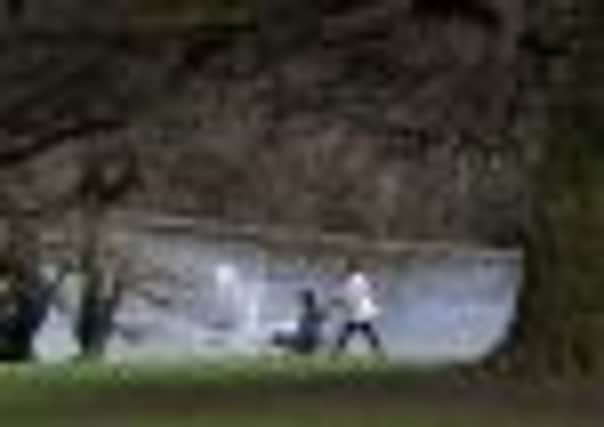Profile on...


There isn’t a village green in Chapel Allerton. The nearest thing might be the traffic roundabout at the intersection of Stainbeck Road and Harrogate Road, with a tree on it that gets decorated with fairy lights on festive occasions. It was definitely lit up the evening after Prince William and Kate Middleton announced their engagement and film crews descended because Chapel A, where Kate’s father was born in 1949, now had its own connection with royalty.
The residents of the Leeds suburb of Chapel Allerton like to think it has something of an upmarket village feel, with its allotments, artisan bakers, arts centre, conservation society, gastropub and a church hall that plays host to community events.
Advertisement
Hide AdAdvertisement
Hide AdThere was first a chapel at “Alreton” between 1230 and 1250, believed to have been built by the monks from Kirkstall Abbey. Chapel Allerton was a proper village in medieval times and for centuries afterwards, surrounded by farmland and described as late as 1715, by Ralph Thoresby, as “well situated in pure Air, upon a pleasant Ascent, which affords a Prospect of the Country ten or twelve miles”. By then, it had become a place where affluent Leeds citizens would have a second home, and in 1767, boasted a racecourse and a bowling green.


In the 19th century, Chapel Allerton became the place for rich industrialists and manufacturers who could afford to move out of the industrial grime of Leeds city centre. Its population quadrupled between 1801 and 1901, and properties, varying from the splendour of Allerton Hall to the back-to-backs in The Methleys, were built. In terms of urban regeneration, The Methleys – 294 terraced and back-to-back houses built in 1901 – was selected as a pilot site for the Homezones programme of traffic-free residential areas in 2002.
Chapel Allerton is home to excellent examples of Victorian domestic architecture, and late on a foggy moonlit evening, the combination of eerie light and 19th century gothic buildings evoke the worlds conjured up in Atkinson Grimshaw’s paintings of Victorian Leeds at night.
Chapel Allerton continued to grow, particularly between the two world wars. It is now definitely a suburb, and it’s more accurate to see it as that than more fancifully as a village. Like its near neighbour, Roundhay, it has a proper suburban shopping parade, and its streets of family homes are lined, just like they are in Mary Poppins, with cherry trees.
Advertisement
Hide AdAdvertisement
Hide AdChapel Allerton is separated by the conservation area of Gledhow Valley Woods from Roundhay, and the park, with its lakes and folly, is a pleasant walk away.
When Roundhay Park was first built, in 1872, there were a lot of complaints that it was too far out of town for the citizens to enjoy it properly; but when Robbie Williams played there in 2006, it seemed as if half of Leeds were enjoying themselves hugely, and the annual fireworks display draws people from all over the city. At 700 acres, Roundhay is the second-largest city park in Europe.
Chapel A has come up in the world in the last couple of decades. For a while in the noughties, property prices went through the roof and anything more fancy than a converted Anderson shelter was seen as a desirable residence and where possible converted into chi-chi flats for young, affluent professionals. A plethora of bars sprang up, and residents feared an influx of noisy revellers. What used to be the old police station became The Old Police Station, a restaurant serving Modern British food – diners could eat their not- inexpensive fish pie or sausages and mash in what used to be the cells, if it took their fancy. Things have calmed down a bit now. The Old Police Station now houses Arti, which serves delicious and down-to-earth curry, and Chapel Allerton seems more at ease with itself as a slightly boho suburb than it did in its aspirational incarnation when it was trying to be trendy.
Two miles and an easy commute from Leeds city centre, it comes into its own as a place to live rather than a place to visit. Its watering holes and restaurants are excellent. In particular, Sukhothai has deservedly won awards, friendly Moroccan Sami’s, where you bring your own drink, offers a warm welcome and recent arrival the Sunshine Bakery does a fine line in bread, cakes and tea served in prettily matched china.
Advertisement
Hide AdAdvertisement
Hide AdNash’s the fish shop has won awards. Seven Arts Centre puts on a regular programme of excellent arts events from cabaret to jazz, and stages a fun, family-friendly annual arts festival. The library is always full.
There is a real sense of community spirit. And one of Kate Middleton’s ancestors is buried in Chapel Allerton cemetery. As neighbourhoods go, who could ask for more than that?
FROM PARK LIFE TO A TROPICAL EXPERIENCE
• Stretching over 100 acres, Roundhay Park is the second-largest city park in Europe and attracts nearly one million people a year.
• Originally, it was a hunting park for the De Lacy family in the 13th-century. It eventually passed to the Nicholson family who in the 19th-century were responsible for building the Mansion House.
Advertisement
Hide AdAdvertisement
Hide Ad• The park’s Tropical World in the Canal Gardens houses one of the largest collections of tropical plants in the UK outside of Kew Gardens. The main building, Coronation House, was named after the original building which opened in 1911, the year of George V’s Coronation.
• Chapel Allerton hosts a weekend-long annual arts festival.